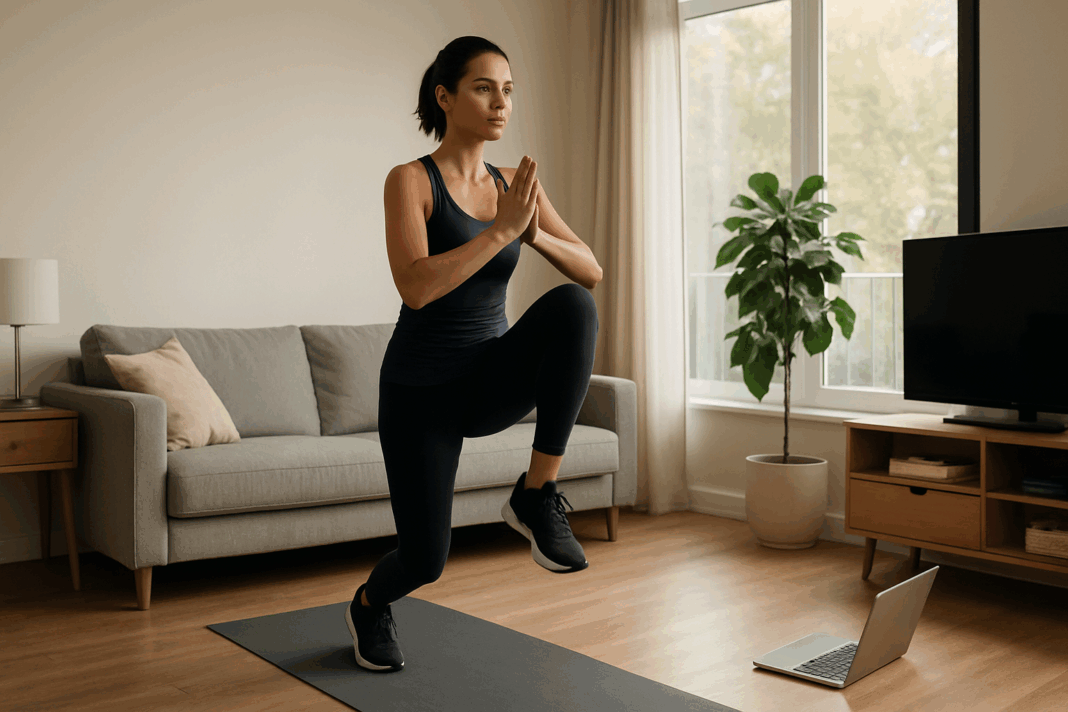In an era of remote work, compact urban living, and evolving wellness trends, maintaining cardiovascular health from the comfort of one’s own home has become both a necessity and a creative challenge. For millions who live in apartments or shared spaces, finding effective, neighbor-friendly workouts that don’t require expansive room or noisy equipment is a growing priority. The good news is that building stamina and improving endurance does not have to involve a gym membership or a sprawling backyard. In fact, some of the most effective training can take place right in your bedroom or living room. This article explores the power and practicality of the bedroom cardio workout and other apartment friendly cardio options, emphasizing how intentional movements can unlock both physical resilience and mental clarity without disturbing those who live nearby.
You may also like: How to Increase Stamina and Endurance Naturally: Smart Training Tips and Nutrition Habits That Support Cardiovascular Fitness
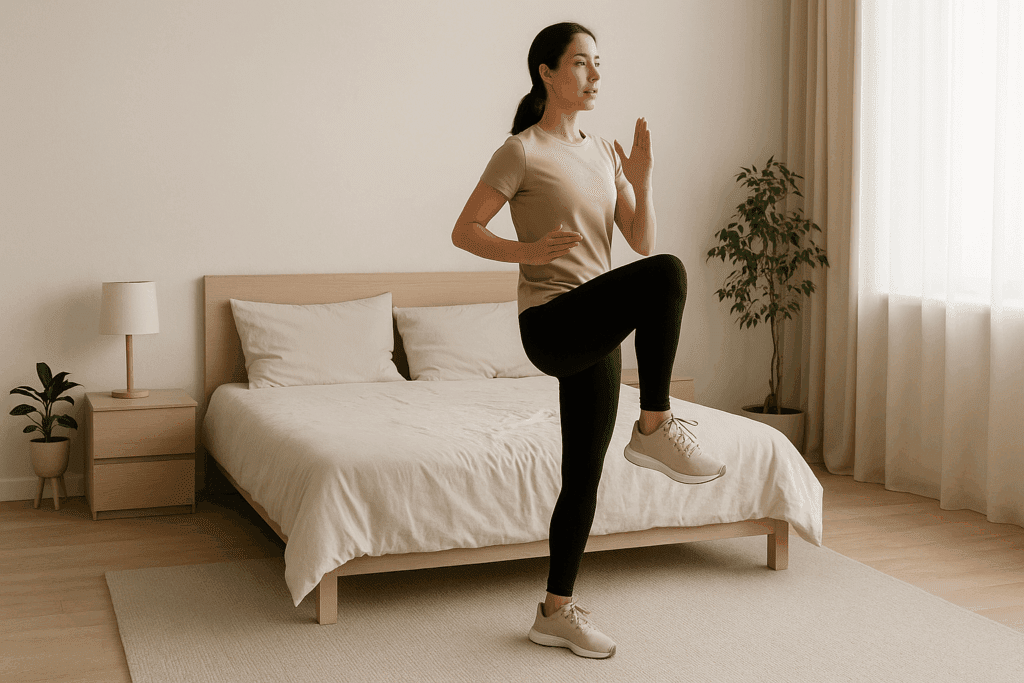
Understanding the Value of Cardio in Small Spaces
Cardiovascular exercise is widely recognized for its role in improving heart health, enhancing lung capacity, and boosting overall energy levels. But when confined to smaller living quarters, traditional routines involving jumping jacks, treadmill runs, or high-impact circuits may not be feasible. That’s where the beauty of apartment cardio lies: it adapts to space limitations while delivering significant fitness results.
A consistent cardio routine is especially important for individuals who lead predominantly sedentary lifestyles, such as office workers or remote professionals. Apartment cardio exercises allow individuals to integrate movement into their daily routines without having to leave their homes. Furthermore, these workouts often require minimal to no equipment, making them both accessible and economical. The key is understanding how to creatively combine movement, breath, and intensity to craft routines that challenge the cardiovascular system while respecting the spatial and acoustic constraints of apartment living.
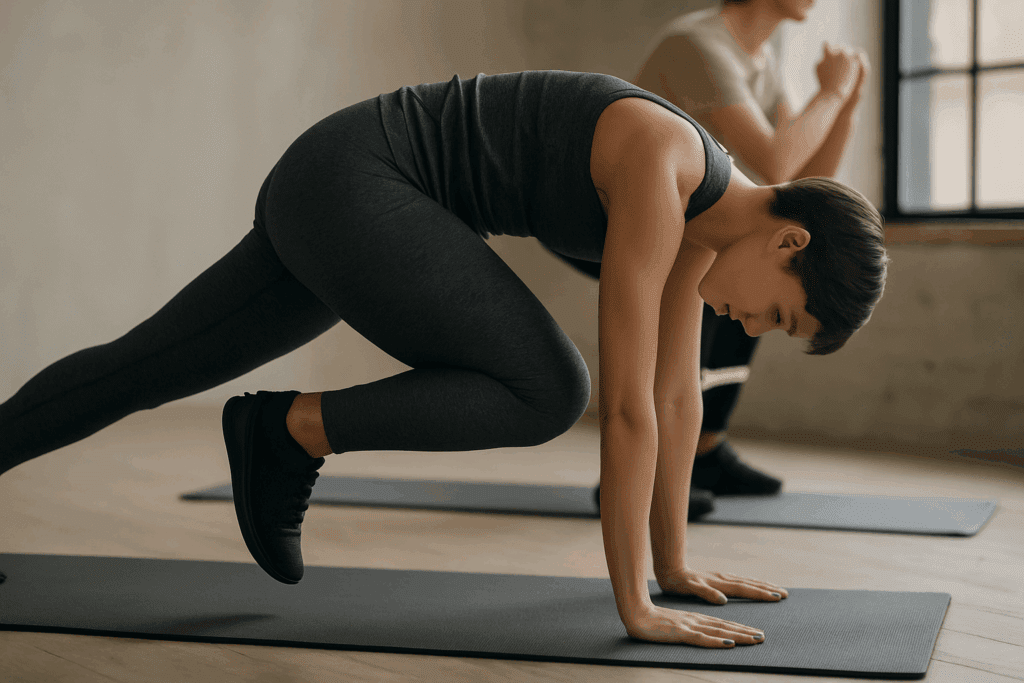
The Science of Low-Impact, High-Efficiency Movement
One of the primary concerns with in-home exercise is the potential noise created by repetitive impact on floors, which can easily disturb neighbors living below. However, low-impact cardio movements have been shown to offer comparable benefits to high-impact counterparts when executed with proper form and intensity. A bedroom cardio workout, for example, can elevate the heart rate, strengthen the lower body, and improve coordination without ever leaving the confines of a carpeted floor.
Research in sports medicine supports the use of high-efficiency, bodyweight-based cardio for improving endurance and muscle tone. Movements such as standing knee lifts, slow mountain climbers, and step-backs create consistent cardiovascular demand without jarring impacts. By leveraging time under tension, balance, and rhythm, these routines can burn calories, reduce stress, and support metabolic health while keeping noise to a minimum. This makes them ideal apartment friendly cardio solutions, especially for early morning or late-night workouts when silence is golden.
Crafting the Ideal Apartment Cardio Routine
Designing an effective apartment cardio workout involves more than simply avoiding noise. It requires structure, variety, and progression. A balanced routine should engage multiple muscle groups, elevate the heart rate consistently, and include brief rest periods to prevent burnout. For example, a 30-minute session might alternate between shadow boxing, lateral steps, and standing oblique crunches, followed by short bouts of deep breathing or dynamic stretching.
A good apartment cardio routine also evolves with the individual’s fitness level. Beginners might start with five minutes of cardio in the bedroom using light movements such as toe taps, step touches, and arm circles. Over time, these can be intensified with added resistance or tempo changes. More advanced practitioners can incorporate plyometric-inspired moves such as silent squat pulses or slow skater lunges, which mimic the explosiveness of jumps without the associated noise. This progressive approach ensures that apartment cardio exercises remain challenging and effective while adapting to each user’s needs.
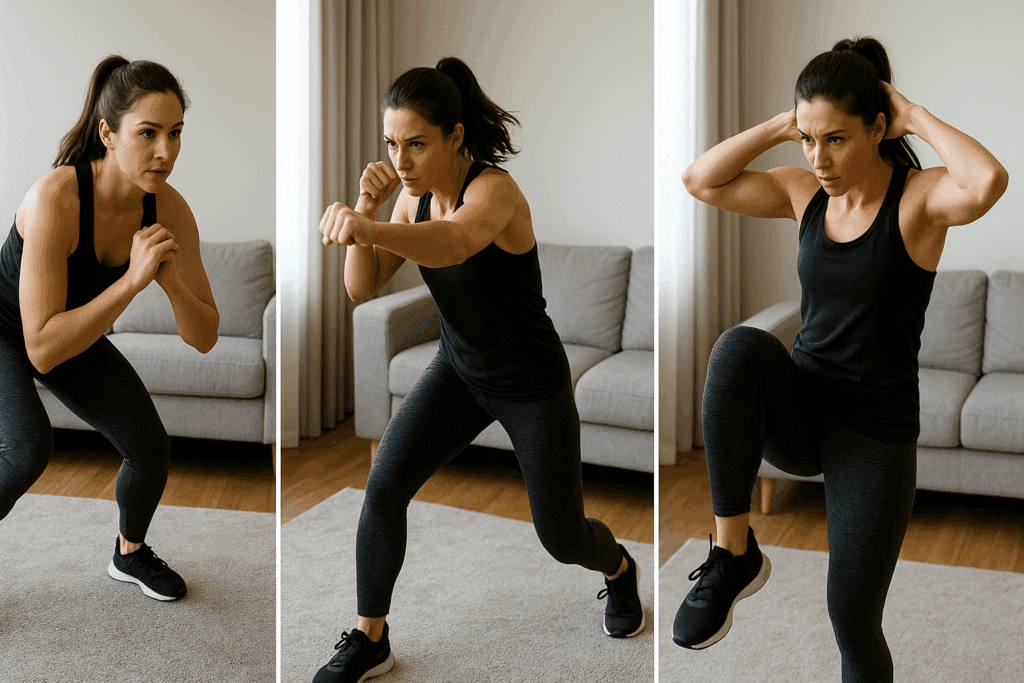
Leveraging Body Awareness and Breathwork
While much attention is often paid to the physical exertion of cardio workouts, the integration of breathwork and mindfulness plays an equally important role in boosting endurance. In confined settings, breath control can enhance oxygen efficiency, reduce fatigue, and promote mental resilience. Incorporating deliberate breathing into a bedroom cardio workout not only improves physical performance but also grounds the practitioner in the present moment.
This awareness of breath and body alignment also enhances safety and effectiveness. In small spaces, it’s easy to become careless with posture or form, leading to overuse injuries or imbalances. By tuning into how the body moves and breathes during each phase of the workout, individuals can optimize their mechanics and get more out of every movement. This is particularly vital in apartment friendly cardio routines where space limitations demand precision and intentionality.
Noise-Free Tools to Elevate Your Workout
Although many apartment cardio exercises can be performed without equipment, incorporating simple tools can elevate the intensity and variety of your workout without adding noise. Resistance bands, sliders, and yoga mats are excellent additions that support full-body engagement and allow for smoother transitions between exercises.
For instance, resistance bands can be used during stationary lunges or glute bridges to intensify muscle activation without increasing impact. Sliders can facilitate low-friction movement for exercises like standing mountain climbers or reverse lunges, enhancing core activation. Even a folded towel on a hardwood floor can serve this purpose. These tools amplify the benefits of cardio in the bedroom while maintaining the neighbor-friendly quietness that apartment dwellers appreciate.

Mental Health Benefits of Cardio in Bedroom Spaces
There is growing evidence linking physical exercise to improved mental health, and this holds true for workouts done in compact spaces. A regular bedroom cardio workout not only helps manage stress and anxiety but also boosts dopamine and serotonin levels, promoting a sense of well-being. The act of carving out time and space for self-care in a familiar, private environment enhances motivation and creates a positive feedback loop for mental and emotional health.
Incorporating apartment cardio into a daily or weekly routine provides a structured outlet for physical expression, which is particularly important during seasons of isolation or limited outdoor activity. The mental discipline required to maintain a home workout practice mirrors the resilience needed to navigate modern life’s uncertainties, further supporting emotional endurance. This emotional stamina complements physical gains, offering a holistic approach to wellness that begins right in your own room.
Creating an Apartment Cardio Schedule That Works
To ensure sustainability, it’s essential to create a schedule that integrates cardio in the bedroom as a natural part of your lifestyle. Morning routines, midday movement breaks, or post-work wind-downs are all opportunities to commit to regular cardiovascular activity. Consistency, more than duration or intensity, is the cornerstone of endurance building.
One effective strategy is to structure weekly sessions with variety and purpose. A Monday morning workout might focus on low-impact cardio and breathwork, while Wednesday could emphasize core-focused apartment cardio exercises, and Friday might feature a full-body endurance challenge using resistance bands. This variety prevents plateaus and keeps motivation high while respecting the physical constraints of your living space. Over time, these intentional movements become second nature, embedding endurance training into your daily rhythm.
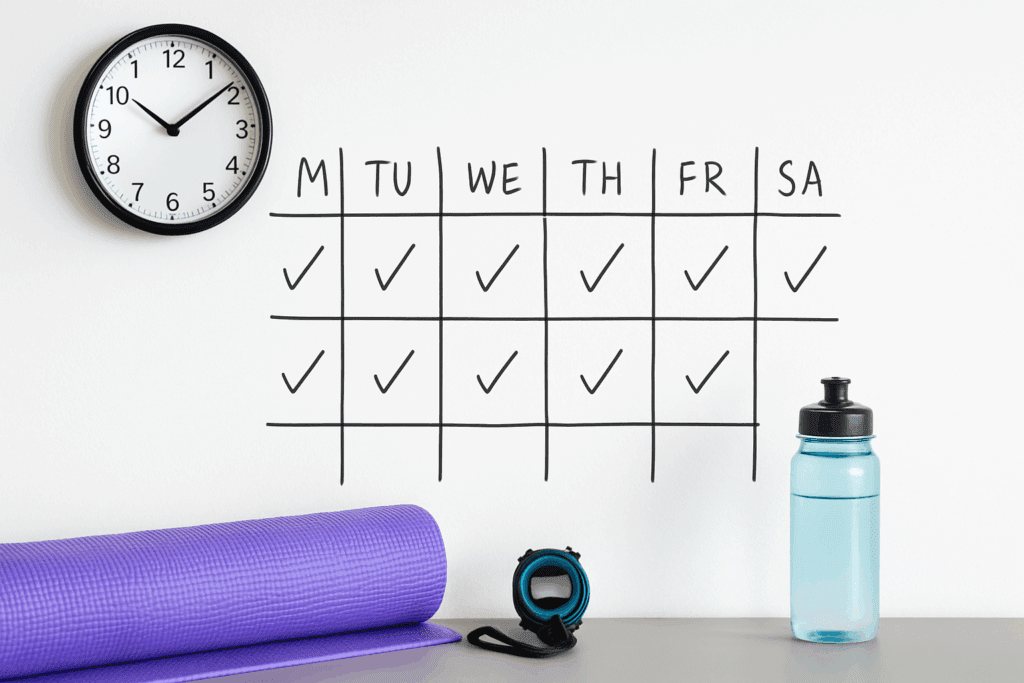
Tailoring Apartment Friendly Cardio to Personal Goals
The beauty of apartment cardio is its adaptability to individual goals. Whether you’re training for a 5K, seeking to lose weight, or simply trying to boost your mood and energy levels, your routine can be customized accordingly. For those focused on endurance, steady-state cardio movements such as shadowboxing or step-back lunges performed over longer durations may be ideal. For strength and stamina, interval-based routines that alternate between cardio and resistance moves offer significant benefits.
Even within the confines of a small bedroom, workout programming can be as sophisticated and goal-oriented as any gym-based plan. Tracking progress, setting benchmarks, and gradually increasing challenge levels all contribute to a sense of achievement. With just a yoga mat and a little creativity, apartment friendly cardio can be a cornerstone of a focused and results-driven fitness regimen.
Common Mistakes and How to Avoid Them
As with any fitness program, it’s important to avoid common pitfalls when doing cardio in the bedroom or other small spaces. One frequent mistake is neglecting warm-ups and cool-downs. Jumping straight into high-energy movement can lead to muscle strain or joint discomfort, particularly in tight environments where movement is more restricted. A gentle five-minute warm-up of shoulder rolls, hip circles, and deep breathing prepares the body for exercise while setting the tone for mindful movement.
Another error is sacrificing form for intensity. In a limited space, people often try to do too much in too little room, leading to improper alignment and overcompensation. Slowing down, focusing on quality over quantity, and using mirrors or video recordings for feedback can mitigate this. Lastly, inconsistency can undermine results. Sticking to a regular apartment cardio schedule ensures steady progress and helps develop both physical endurance and mental discipline, which are key to long-term health outcomes.
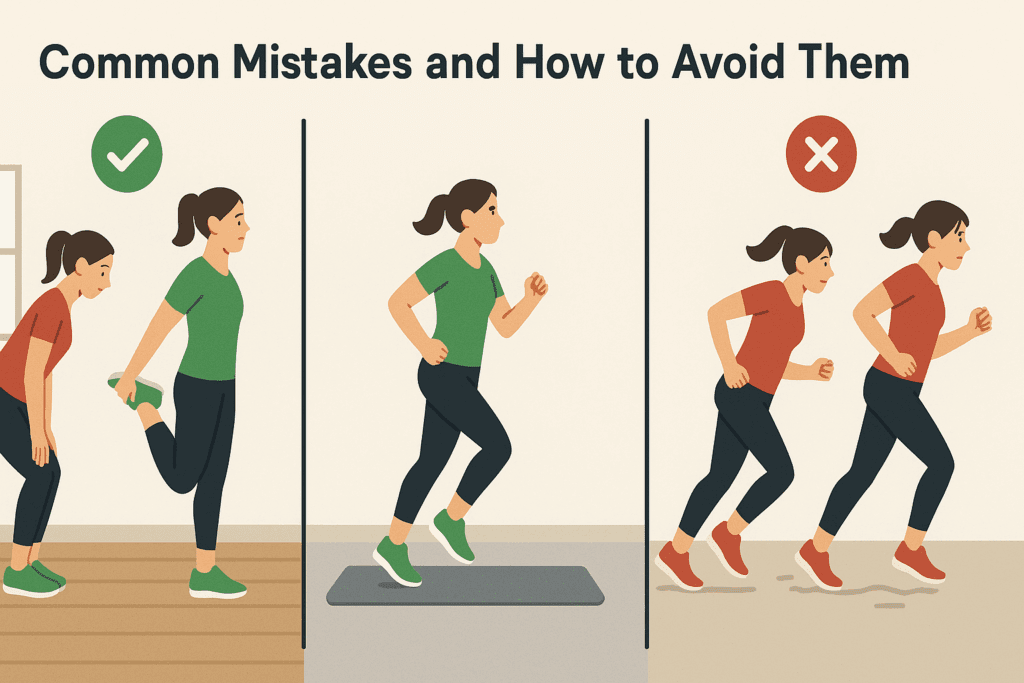
Nutrition and Recovery to Support Your At-Home Cardio Routine
Cardio is only one pillar of endurance training; nutrition and recovery are equally critical. Proper hydration, balanced meals, and post-workout snacks contribute significantly to performance and recovery. Consuming protein and complex carbohydrates after a cardio session helps repair muscle tissue and replenish energy stores. In the context of at-home workouts, it can be easier to fall into poor eating habits due to the proximity of the kitchen. Establishing post-workout routines that include healthy snacks like Greek yogurt with fruit or a smoothie with protein powder helps reinforce positive habits.
Recovery practices such as stretching, foam rolling, and adequate sleep also support cardiovascular fitness. After completing a bedroom cardio workout, taking 10 minutes to stretch or meditate can enhance flexibility and calm the nervous system. Sleep, often undervalued, plays a vital role in hormone regulation and muscle repair, making it a cornerstone of performance enhancement. When paired with smart recovery and nutrition strategies, apartment cardio exercises become even more impactful.
Frequently Asked Questions: Apartment Cardio and At-Home Endurance Training
1. Can apartment cardio be as effective as gym workouts for building endurance?
Absolutely. While gyms offer specialized machines and dedicated spaces, the effectiveness of an endurance workout is less about location and more about intensity, consistency, and progression. Apartment cardio routines can effectively improve cardiovascular health by combining bodyweight exercises, breath control, and interval timing. A well-structured bedroom cardio workout that includes varied movements such as low-impact steps, isometric holds, and resistance band work can significantly enhance stamina. When performed consistently with strategic progression, these workouts can rival traditional gym sessions in terms of endurance-building benefits.
2. What are some common mistakes people make when doing cardio in bedroom spaces?
A frequent error is underestimating the importance of surface preparation. Carpets can shift or bunch, and hard floors may require extra cushioning for joint protection. Another mistake is performing high-impact movements that may seem effective but cause structural vibrations, disrupting neighbors and risking injury. For a sustainable and respectful routine, apartment cardio exercises should be tailored for low-noise impact while still engaging the full body. It’s also crucial to pay attention to airflow; opening a window or using a fan can improve oxygen circulation and help regulate body temperature.
3. How can I stay motivated to do apartment cardio regularly without getting bored?
Variety is the cornerstone of long-term motivation. Integrate different formats such as dance-inspired routines, yoga-cardio hybrids, or themed challenges into your week to maintain engagement. Utilizing digital platforms or fitness apps that offer guided apartment friendly cardio sessions can also break the monotony. Adding ambient music or lighting changes can simulate new environments and keep your cardio in the bedroom fresh and stimulating. Set mini-goals like mastering a specific move or improving time-under-tension metrics to foster a sense of achievement.
4. Is there an ideal time of day to perform a bedroom cardio workout?
The best time ultimately depends on your personal rhythm and energy levels, but there are advantages to each window. Morning sessions help kickstart metabolism and promote discipline, while evening workouts can relieve stress and tension accumulated throughout the day. Cardio in bedroom environments is especially convenient at any hour because it minimizes the need to travel or adhere to a gym schedule. For apartment dwellers, mid-morning or late afternoon may offer the best compromise between energy levels and avoiding disturbing neighbors. Whichever time you choose, consistency and listening to your body’s signals are key.
5. How can I measure progress with apartment cardio exercises without fitness machines?
Tracking progress in at-home workouts doesn’t require expensive equipment. You can measure improvements by noting reduced rest time between movements, increased repetitions during intervals, or enhanced balance and control during complex moves. Many who practice apartment friendly cardio use heart rate monitors or smartphone apps to track intensity zones. Video recordings can also serve as visual benchmarks for posture, range of motion, and fluidity over time. Journaling after each bedroom cardio workout helps document mood, energy, and performance for a more holistic view of progress.
6. What are the long-term health benefits of consistent cardio in bedroom routines?
Beyond immediate cardiovascular gains, regular apartment cardio can reduce the risk of hypertension, Type 2 diabetes, and stroke. It also supports metabolic health, improves sleep quality, and boosts cognitive function through improved blood flow. A consistent bedroom cardio workout strengthens both the muscular and respiratory systems without requiring large spaces or heavy equipment. Over time, these exercises help regulate cortisol levels, reducing chronic stress and enhancing emotional well-being. The accessibility of cardio in the bedroom means you’re more likely to stay consistent, making the long-term health impacts even more pronounced.
7. Can apartment friendly cardio routines support muscle toning and fat loss simultaneously?
Yes, especially when structured strategically with circuit or interval-based formats. Apartment cardio exercises that combine dynamic movements with strength-based holds, such as wall sits or plank variations, can simultaneously engage muscle fibers and elevate heart rate. This dual action creates an ideal environment for fat oxidation while building lean muscle mass. Incorporating progressive overload using resistance bands or time-under-tension principles adds challenge without requiring loud or heavy equipment. Because apartment friendly cardio often minimizes downtime, it keeps the metabolism elevated longer, supporting sustained fat loss.
8. Are there specific modifications for older adults doing apartment cardio exercises?
Absolutely. For older adults or those with joint concerns, the emphasis should be on stability, control, and gradual progression. Gentle forms of cardio in bedroom settings, like seated marches, slow step-touches, or modified standing kicks, offer low-impact cardiovascular engagement. Using a sturdy chair or countertop for support can increase confidence and reduce fall risk. Emphasizing breathwork and joint mobility alongside cardio helps preserve functionality and enhances daily living. With proper guidance and attention to form, apartment friendly cardio is not only accessible but highly beneficial for aging populations.
9. How can I design an apartment cardio space that feels motivating and functional?
Creating an inviting workout zone doesn’t require a lot of square footage. Start by dedicating a corner or area with ample natural light and ventilation. Use a non-slip yoga mat to define your cardio in bedroom area and add calming or energizing visuals, such as motivational quotes or minimalist decor. Storage bins for resistance bands, sliders, or towels keep the space organized and reduce friction when starting your workout. Some even use mirrors to monitor form and foster a more immersive experience. The key is designing a space that encourages you to return consistently.
10. What trends are emerging in the world of apartment friendly cardio and home-based endurance training?
Several innovations are reshaping how people engage with at-home fitness. Virtual reality workouts are beginning to merge immersive gaming with cardiovascular training, making cardio in the bedroom more interactive and fun. Wearable tech now tracks heart rate variability and recovery, providing data that can fine-tune your apartment cardio strategy. Additionally, there’s a growing emphasis on “quiet cardio,” where fitness creators develop routines specifically engineered for minimal noise, appealing to apartment dwellers. Hybrid classes that combine strength, mobility, and cardio continue to evolve, often delivered via on-demand streaming platforms. As interest in sustainable, location-flexible fitness grows, the possibilities for apartment friendly cardio continue to expand with impressive creativity and accessibility.
Final Thoughts: Redefining Fitness With Apartment Cardio Exercises
The modern landscape of fitness is shifting away from rigid definitions and towards flexibility, adaptability, and inclusivity. Apartment cardio exercises exemplify this transformation by proving that effective endurance and stamina training can happen in any space, regardless of size or noise restrictions. With the right approach, a simple bedroom cardio workout can rival the cardiovascular benefits of a gym session, all while fitting seamlessly into a busy lifestyle.
By embracing quiet, intentional movement and aligning workouts with personal goals and space constraints, individuals can unlock lasting physical resilience and mental clarity. These workouts not only offer a path to improved endurance but also serve as daily acts of self-care that promote holistic health. Whether you’re performing cardio in the bedroom or creating a full apartment friendly cardio circuit in your living room, remember that consistency, mindfulness, and creativity are the most important tools in your training arsenal. In the end, the best workout is the one that fits your life—quietly, powerfully, and right at home.
Was this article helpful? Don’t let it stop with you. Share it right now with someone who needs to see it—whether it’s a friend, a colleague, or your whole network. And if staying ahead on this topic matters to you, subscribe to this publication for the most up-to-date information. You’ll get the latest insights delivered straight to you—no searching, no missing out.
Further Reading:
33 Cardio-Based Bodyweight Exercises
20 cardio exercises to do at home with minimal equipment, from beginner to advanced

